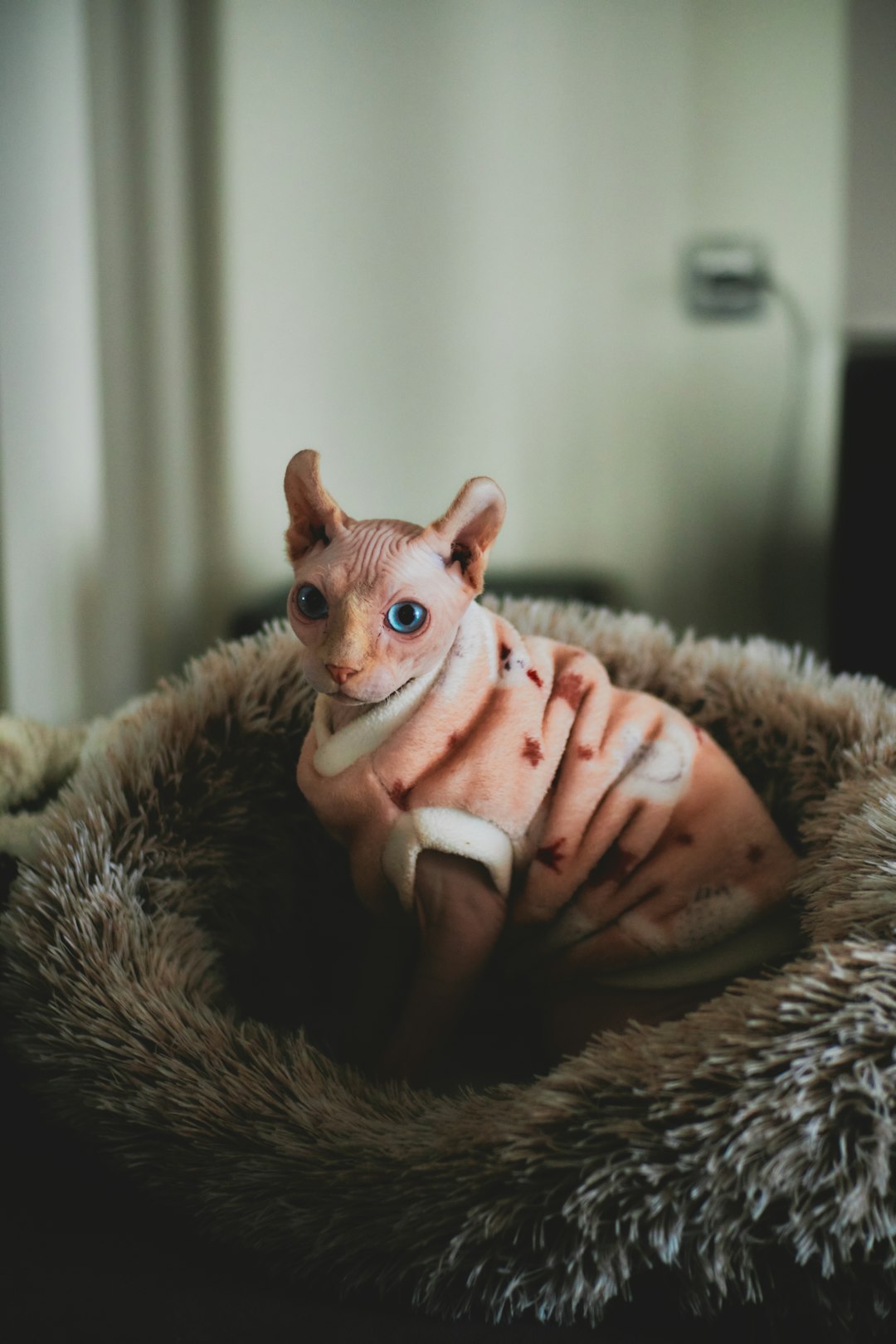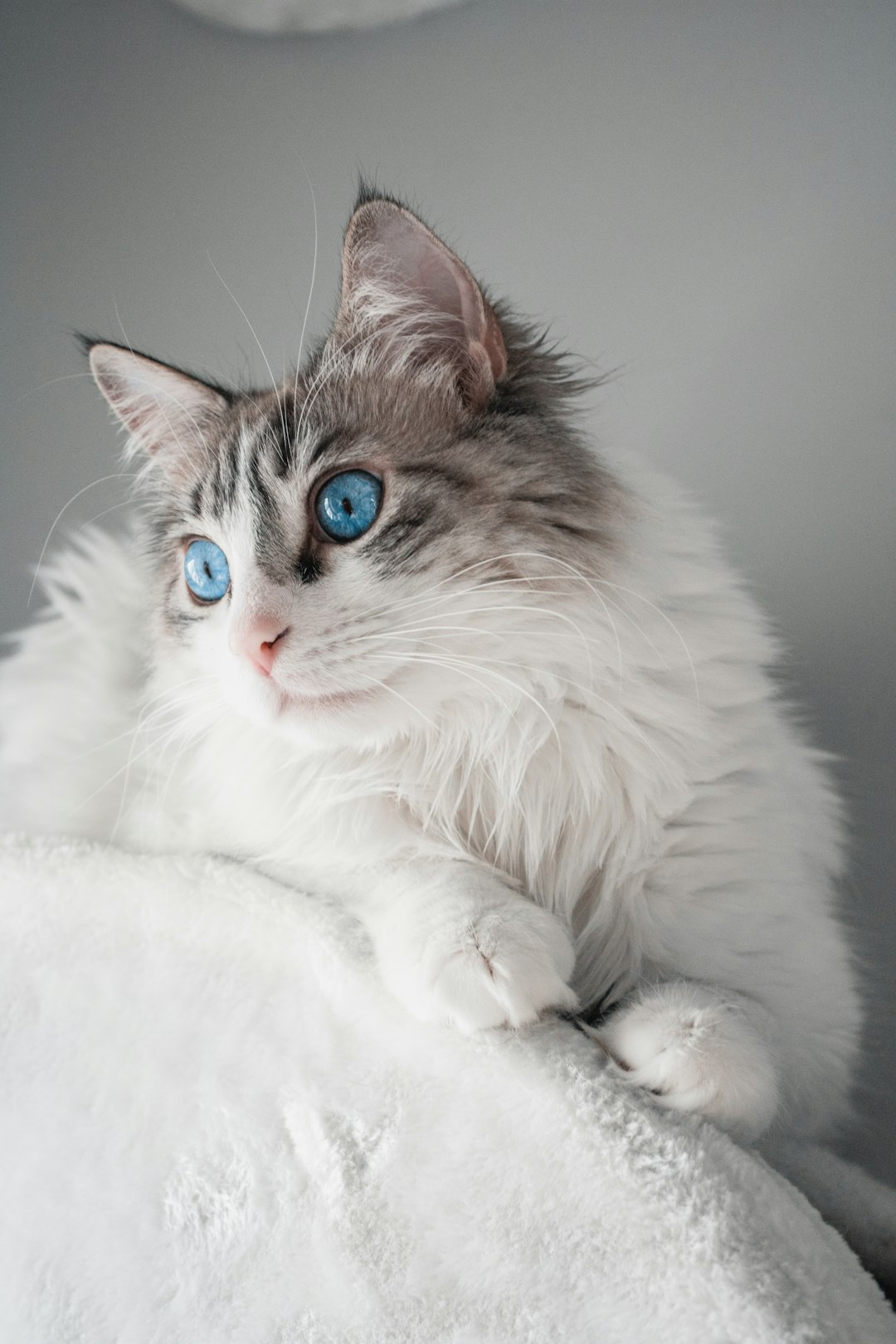Grooming your cat is not just about keeping them looking their best; it’s an essential part of their overall health and well-being. Regular grooming helps to reduce shedding, prevent matting, and maintain a shiny coat, while also allowing you to check for skin issues or parasites. With the right tools and techniques in hand, you can create a positive grooming experience that strengthens the bond between you and your feline friend. In this blog post, we will explore the core components of an effective cat grooming kit, guiding you through the must-have tools and practices that every cat owner should consider. From basic brushes to dental hygiene essentials, let’s dive into the world of cat grooming and discover how to keep your kitty looking and feeling their best.
Understanding the Importance of Cat Grooming
Grooming is an essential aspect of responsible cat ownership. Cat grooming kits not only help maintain your pet’s appearance but also contribute to their overall well-being. Regular grooming fosters a strong bond between you and your feline friend while ensuring that they are comfortable and healthy.
Benefits of Regular Grooming
| Benefit | Description |
|---|---|
| Reduced Shedding | Regular brushing minimizes loose hair, reducing the amount of fur around your home. |
| Mat Prevention | Grooming helps prevent mats and tangles, which can be painful and detrimental to skin health. |
| Skin Health | It promotes better circulation and can help detect skin issues early on. |
| Bonding Time | The grooming process can enhance your relationship through shared positive experiences. |
How Grooming Affects Cat Health
Grooming is more than just an aesthetic practice; it significantly impacts your cat’s health. A well-groomed cat is less prone to certain health issues.
- Parasite Detection: Regular grooming allows you to spot fleas, ticks, or other external parasites during routine care.
- Hygiene Maintenance: Grooming prevents dirt and debris from accumulating in your cat’s coat, which can lead to infections.
- Behavioral Insight: Observing your cat while grooming can reveal changes in their behavior or physical condition, helping you respond to potential health concerns quickly.
Understanding the importance of grooming can lead to a happier, healthier cat and a more harmonious household. By investing in a cat grooming kit, you prepare yourself to tackle these essential grooming tasks effectively.
Basic Tools for Cat Grooming
Essential Grooming Tools
Every cat owner understands that proper grooming is crucial for maintaining their feline’s health and comfort. To effectively groom your cat, a Cat grooming kit should include the following essential tools:
| Tool | Purpose |
|---|---|
| Brush | Removes loose hair and prevents matting. |
| Comb | Detangles fur, especially for long-haired breeds. |
| Nail Clippers | Keeps claws trimmed to prevent injury to your cat and furniture. |
| Bathing Supplies | Cat-friendly shampoo and towels for occasional baths. |
| Ear Cleaner | Maintains ear hygiene and prevents infections. |
| Toothbrush & Paste | Ensures dental health by combating plaque build-up. |
Choosing the Right Tools for Your Cat
Selecting appropriate grooming tools is key to a successful grooming routine. Different breeds may require specific tools to suit their unique fur types. For instance:
- Short-haired cats benefit from rubber brushes that remove loose hair effectively.
- Long-haired breeds require wide-toothed combs for detangling and preventing mats.
- Always prioritize tools designed for cats to ensure comfort and avoid injury.
By investing in the right grooming tools, cat owners can enhance their pet’s overall well-being, positively impacting their coat quality, skin health, and emotional happiness. Maintaining a regular grooming schedule, along with well-chosen tools from your Cat grooming kit, will ensure a smooth grooming experience for both you and your feline companion.
Choosing the Right Brush for Your Cat
Types of Brushes and Their Uses
Selecting the right brush is essential for effective grooming, as different brushes serve various purposes. Here’s a helpful table that outlines the most common types of brushes and their uses:
| Brush Type | Purpose |
|---|---|
| Slicker Brush | Ideal for removing mats and tangles in long fur. |
| Bristle Brush | Excellent for short-haired cats to remove loose hair and dandruff. |
| Pin Brush | Useful for detangling and fluffing the coat. |
| Undercoat Rake | Perfect for reaching the undercoat of thick-furred breeds. |
| Rubber Brush | Effective for collecting loose hair and providing a massage. |
Understanding these options helps you cater to your cat’s specific grooming needs, ensuring a happy and healthy grooming experience.
Frequency of Brushing Based on Fur Type
The frequency of brushing your cat should depend on their fur type to maintain a healthy coat. Here’s a guide to help you determine how often you should brush based on your cat’s fur:
| Fur Type | Recommended Brushing Frequency |
|---|---|
| Short-Haired | Once a week |
| Medium-Haired | 2-3 times a week |
| Long-Haired | Daily |
By adhering to these guidelines, you can significantly reduce shedding and matting. Incorporating a cat grooming kit with the right brush ensures your feline friend remains both comfortable and stylish!
Nail Care Essentials
Importance of Nail Trimming
Maintaining your cat’s nails is crucial for their overall health and well-being. Long nails can lead to discomfort when walking, potential injuries, and even issues with claw-related diseases. Regular nail trimming helps prevent these problems, ensuring that your furry friend remains active and agile. Additionally, keeping your cat’s claws trimmed can reduce the risk of furniture damage and unwanted scratches during playtime.
Tools for Safe Nail Trimming
To effectively trim your cat’s nails, utilizing the right tools is essential. Here’s a table to outline the must-have tools in your cat grooming kit for safe nail trimming:
| Tool | Description | Purpose |
|---|---|---|
| Cat Nail Clippers | Specially designed clippers for cats. | To trim nails quickly and safely. |
| Nail File or Grinder | For smoothing out sharp edges. | To prevent snagging on furniture. |
| Styptic Powder | Quick-drying powder for minor nail cuts. | To stop bleeding if a quick is cut. |
| Cat Treats | Positive reinforcement. | To reward your cat after trimming. |
Using these tools will not only ensure a successful nail trimming session but also create a more pleasant experience for both you and your cat. Proper nail care incorporates the right technique and equipment. By regularly caring for your cat’s nails, you are helping to foster a healthy grooming routine that keeps your furry companion comfortable and happy.
Bathing Your Cat: When and How
When to Bathe Your Cat
Bathing your cat isn’t always necessary, as many cats are adept self-groomers. However, there are specific situations when you might need to intervene. Consider bathing your cat in the following scenarios:
| Situation | Action |
|---|---|
| Excessive Dirt or Debris | If your cat gets dirty or rolls in something undesirable, a bath may be warranted. |
| Skin Conditions | Consult a vet for bathing recommendations if your cat has skin issues or allergies. |
| Long-Haired Breeds | Regular baths can help prevent matting and tangles in long-haired breeds. |
| Unpleasant Odor | If your cat develops an unpleasant smell despite regular grooming, a bath can help. |
Best Practices for Bathing
To ensure a seamless bathing experience for both you and your feline friend, follow these best practices:
- Gather Your Supplies: Prepare a cat grooming kit that includes cat-safe shampoo, a non-slip mat, towels, and a cup for rinsing.
- Use Lukewarm Water: Cats are sensitive to temperature; thus, using lukewarm water will keep them comfortable.
- Introduce Slowly: Allow your cat to explore the bathing area before you start. This can reduce their anxiety.
- Wet Gradually: Avoid shocking your cat with water. Use a cup to wet them gradually, starting with the back and avoiding the face until the end.
- Gentle Rinsing: Ensure all shampoo is rinsed out thoroughly to prevent skin irritation.
- Drying Techniques: Wrap your cat in a towel to absorb excess water and, if they’re comfortable, you can use a low-heat hairdryer from a distance.
Following these tips will not only facilitate a stress-free bathing experience but will also keep your cat clean and healthy!
Ear and Eye Care for Cats
Maintaining Ear Hygiene
Ear care is an essential aspect of grooming that often goes overlooked. Regular inspection and cleaning can help prevent infections and other ear-related issues. Here are some important tips for maintaining ear hygiene:
| Frequency | Action | Tools Needed |
|---|---|---|
| Once a week | Inspect your cat’s ears for dirt and wax buildup | Cotton balls or gauze |
| As needed | Clean with a vet-approved ear cleaner | Ear cleaning solution |
To clean your cat’s ears, gently wipe the outer ear with a cotton ball moistened with the cleaner. Never insert anything deep into the ear canal, as this can cause serious damage.
Cleaning Cat’s Eyes Safely
Eye care is just as critical as ear care in maintaining your cat’s overall health. Cats can experience various eye issues, including discharge and infections. Follow these steps to clean your cat’s eyes safely:
| Signs of Issues | Recommended Action | Tools Needed |
|---|---|---|
| Excessive tearing | Wipe with a damp, clean cloth | Soft cloth or cotton pad |
| Redness or swelling | Consult your veterinarian | N/A |
Use a soft, damp cloth to gently wipe any discharge from around the eyes. Make sure you use separate areas of the cloth for each eye to prevent cross-contamination. If you notice persistent issues, it’s crucial to seek professional help.
Keeping your cat’s ears and eyes clean not only promotes health but also contributes to a happy and comfortable feline friend. A comprehensive cat grooming kit should include items to address these needs, ensuring you are well-prepared as a responsible kitty owner.
Dental Hygiene for Cats
Importance of Dental Care
Maintaining your cat’s dental hygiene is crucial for their overall health. Poor dental care can lead to plaque buildup, gum disease, and even tooth loss. Moreover, bacteria from dental issues can enter the bloodstream, potentially affecting the heart, liver, and kidneys. By prioritizing your feline’s dental health, you can increase their quality of life and longevity. Here’s a brief overview of the impacts of neglecting dental care:
| Impact | Description |
|---|---|
| Bad Breath | Indicates underlying dental problems. |
| Gum Disease | Causes pain and can lead to serious infections if untreated. |
| Tooth Decay | Leads to tooth loss and affects eating habits. |
| Systemic Issues | Bacteria can impact major organs like the heart and liver. |
Tools for Cleaning Cat’s Teeth
To ensure effective dental hygiene for your cat, using the right tools is essential. Here are some must-have tools you should consider:
| Tool | Purpose |
|---|---|
| Cat Toothbrush | Specifically designed to fit a cat’s mouth. |
| Cat Toothpaste | Safe for ingestion; eliminates plaque and freshens breath. |
| Dental Wipes | Quick solution for cleaning teeth on the go. |
| Dental Chews/Treats | Helps reduce tartar buildup while satisfying your cat’s chewing instinct. |
Incorporating these tools into your cat grooming kit will pave the way for a healthier mouth and happier cat. Regular brushing and dental treats can make a significant difference in preventing dental diseases. Always consult with your veterinarian for personalized dental care recommendations.
Dealing with Shedding
Understanding Cat Shedding Patterns
Shedding is a natural process for cats, as they periodically lose old or damaged fur to make way for new growth. Typically, cats shed more during seasonal changes—particularly in spring and fall. Factors such as breed, age, health, and diet can also affect shedding patterns. For example, long-haired breeds may require more attention due to their thicker coats. Understanding your cat’s shedding cycle will help you prepare for those extra fur tufts around your home.
Tools to Manage Shedding
To effectively manage cat shedding, consider incorporating the following tools into your cat grooming kit:
| Tool | Purpose |
|---|---|
| Brush | Helps remove loose fur and reduces matting. |
| De-shedding Tool | Specifically designed to reach the undercoat and minimize shedding. |
| Lint Roller | Easily removes pet hair from furniture and clothing. |
| Nail Clipper | Maintains nail health, preventing scratches that may lead to fur loss. |
| Furminator | Advanced tool for removing large amounts of loose fur efficiently. |
Incorporating these tools into your routine will enhance your ability to manage shedding effectively. Regular grooming not only keeps your pet looking great but also reduces the amount of hair that ends up on your furniture and clothes while keeping your home cleaner and more comfortable.
Creating a Comfortable Grooming Space
Setting Up a Grooming Area at Home
Creating a designated grooming area in your home can significantly enhance the grooming experience for both you and your cat. Here are some essential tips to set up a welcoming space:
| Element | Description |
|---|---|
| Location | Choose a quiet room or corner away from distractions. |
| Surface | Use a stable table or mat that can be cleaned easily. |
| Lighting | Ensure good lighting for visibility without being too harsh. |
| Storage | Keep grooming tools organized in a nearby storage unit. |
Make sure the area is free from any loud noises or sudden movements to help reduce anxiety.
Making Grooming Enjoyable for Your Cat
A calm environment is essential when grooming your cat. To make this experience enjoyable, consider these approaches:
- Familiar Scents: Introduce familiar blankets or toys to the grooming space, as these help your cat feel more comfortable.
- Positive Reinforcement: Use treats and affection during and after grooming sessions. This creates a positive association with grooming.
- Regular Routine: Establishing a regular grooming schedule can help your cat anticipate and accept grooming as part of their routine.
- Comfort: Ensure your cat has a space to escape to if they feel overwhelmed, allowing them to return when they’re ready.
By thoughtfully setting up your space and engaging your cat positively, you can create a stress-free environment that significantly improves grooming experiences, particularly when using a cat grooming kit effectively.
When to Seek Professional Grooming Services
Grooming your cat is an essential part of responsible pet ownership. However, there are instances when seeking professional grooming services becomes necessary. Understanding when to hand over the grooming responsibilities can help ensure your feline friend stays healthy and comfortable.
Signs Your Cat Needs Professional Help
Recognizing the signs that your cat needs professional grooming can be crucial. Here are some indicators:
| Sign | Description |
|---|---|
| Severe Matting | If your cat’s fur is heavily matted, a professional can safely remove the tangles. |
| Skin Issues | Redness, irritation, or sores may require expert attention to diagnose and treat. |
| Nail Care | Overgrown nails can be painful; professionals have the tools to trim them safely. |
| Behavioral Issues | If your cat becomes aggressive or extremely stressed during grooming, a groomer can help. |
Finding a Good Groomer
Once you’ve decided it’s time for professional help, finding a reliable groomer is essential. Here are some tips to consider:
- Ask for Recommendations: Speak to fellow pet owners or your veterinarian for trusted recommendations.
- Visit the Facility: A tour can establish how clean and pet-friendly the grooming environment is.
- Inquire About Services: A good groomer should be knowledgeable about feline grooming needs.
- Check Reviews: Online reviews and testimonials can offer insight into the groomer’s reputation.
By being vigilant and informed, you can take the best approach to grooming your cat, ensuring their comfort and well-being. Consider investing in a cat grooming kit that allows you to maintain basic grooming needs while also understanding when expert assistance is warranted.
Frequently Asked Questions
What essential items should be included in a cat grooming kit?
A well-rounded cat grooming kit should include several essential items such as a high-quality brush suitable for your cat’s fur type, a comb for detangling, nail clippers to maintain their claws, and cat-safe shampoo for baths. Additionally, including ear cleaning solution and cotton balls can help maintain ear cleanliness, while a grooming glove can be effective for removing loose fur and providing a massaging effect, enhancing the bonding experience between you and your cat.
How often should I groom my cat?
The frequency of grooming will depend on your cat’s fur type and lifestyle. Long-haired cats typically require more frequent grooming, ideally every day, to prevent matting and hairballs. Short-haired cats may only need grooming once a week, but it can vary if they shed more frequently. Regular grooming not only keeps your cat looking their best but also allows you to check for skin issues, parasites, or other health concerns by examining their coat and skin thoroughly during grooming sessions.
Can grooming help reduce shedding in cats?
Yes, regular grooming can significantly help reduce shedding in cats. By grooming your cat consistently, you can remove loose and dead hair before it falls onto your floors and furniture. This helps in managing the amount of hair that ends up around your home. Additionally, grooming stimulates natural oils in your cat’s skin, promoting a healthy coat and skin, which can reduce excessive shedding due to dryness or skin issues.
What type of brush is best for my cat?
The best type of brush for your cat largely depends on their coat type. For short-haired cats, a rubber brush or a bristle brush works well to remove loose hair and dirt. Long-haired cats typically benefit from a wide-toothed comb and slicker brush to untangle knots and prevent matting. If your cat has sensitive skin, opt for softer brushes that are gentle on their skin and coat. Always choose tools that cater specifically to your cat’s grooming needs for the best results.
How can I make grooming a positive experience for my cat?
To ensure grooming is a positive experience for your cat, start by introducing grooming tools gradually and associating them with positive experiences, such as treats or petting. Keep sessions short initially and gradually increase the duration as your cat becomes more accustomed to it. Create a calm environment where your cat feels secure, and avoid forcing them if they are stressed. Regularly praising and rewarding your cat during and after grooming can help create a positive association with the process.



